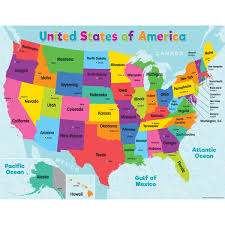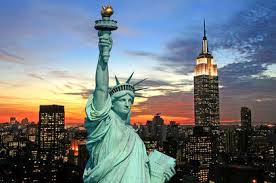Introduction

The United States of America (USA) is one of the most influential countries in the world, with a rich history, a complex political system, and a significant cultural impact globally. From its origins as a group of British colonies to its rise as a global superpower, the USA has played a pivotal role in shaping modern history. The country’s economy, politics, and culture have been instrumental in defining global trends and international relations. This essay explores the history, political structure, economic landscape, cultural significance, and global influence of the USA.
History of the USA
The history of the USA is marked by pivotal moments that have shaped its development and global standing. The nation’s history can be divided into several key periods, including pre-colonial times, colonization, independence, civil conflict, industrialization, and modern global leadership.
Pre-Colonial and Colonial America
Before European contact, the land that is now the USA was inhabited by indigenous peoples with diverse cultures, languages, and societies. Tribes such as the Cherokee, Navajo, Sioux, and Iroquois had well-established civilizations. However, European colonization began in the 16th and 17th centuries, with the Spanish, French, and British establishing settlements. The British colonies, particularly the thirteen that later formed the USA, became economically and politically significant.
American Revolution and Independence
The American Revolution (1775–1783) was a result of growing discontent among the colonies due to British taxation and lack of representation. The Declaration of Independence, signed in 1776, marked the birth of the nation. Under the leadership of figures like George Washington, the USA secured independence and established a democratic government based on the Constitution in 1787.
Civil War and Reconstruction
The issue of slavery and state rights led to the Civil War (1861–1865), one of the most defining conflicts in American history. The war resulted in the abolition of slavery and the reunification of the nation. However, the Reconstruction era that followed was marked by significant challenges, including racial discrimination and economic hardships.
Industrialization and Global Expansion
The late 19th and early 20th centuries saw rapid industrial growth, urbanization, and technological advancements. The USA became a global economic power, participating in international affairs, particularly in World War I. The Great Depression of the 1930s, however, slowed progress until economic recovery during World War II.
World Wars and the Cold War
The USA played a crucial role in both World Wars, emerging from World War II as a global superpower. The Cold War (1947–1991) saw the USA and the Soviet Union in ideological and military competition, leading to significant events like the Korean War, the Vietnam War, and the Space Race.
Modern Developments

The USA has continued to evolve politically, economically, and socially. The Civil Rights Movement of the 1960s led to greater equality, while technological advancements solidified the country’s leadership in innovation. Today, the USA faces challenges such as economic inequality, political polarization, and global competition.
Political System and Governance
The USA operates under a constitutional federal republic, with a government structure based on democratic principles.
Constitution and Separation of Powers
The US Constitution, ratified in 1787, remains the foundation of governance. The government is divided into three branches:
- Executive Branch (President and administration)
- Legislative Branch (Congress: Senate and House of Representatives)
- Judicial Branch (Supreme Court and lower courts)
This system ensures a balance of power and prevents any single entity from dominating.
Federal vs. State Government
The USA has a federal government that shares power with individual states. Each state has its own constitution, government, and laws, allowing for regional governance while maintaining national unity.
Two-Party System and Political Shifts
The USA primarily operates under a two-party system, United States of America dominated by the Democratic and Republican parties. Political shifts have shaped domestic and foreign policies, with debates over healthcare, taxation, civil rights, and foreign interventions defining electoral outcomes.
Economy of the USA
The USA boasts one of the world’s largest and most dynamic economies, driven by diverse industries and innovation.
Capitalism and Free Market System
The US economy is based on capitalism, United States of America with private enterprises playing a significant role in wealth generation. The government’s role includes regulation, monetary policy, and trade agreements.
Major Industries
The USA leads in industries such as:
- Technology (Silicon Valley, artificial intelligence, software development)
- Finance (Wall Street, banking, insurance)
- Manufacturing (automobiles, aerospace, consumer goods)
- Agriculture (food production, exports)
Economic Challenges
Despite its economic strength, the USA faces challenges, including:
- Recessions (e.g., the 2008 financial crisis)United States of America
- Income inequality (disparities in wealth distribution)
- Trade tensions (competition with China, global trade policies)
Culture and Society
American culture is diverse, reflecting a history of immigration and cultural exchange.United States of America
Diversity and Immigration
The USA is often described as a “melting pot,” with immigrants from around the world contributing to its cultural fabric. This diversity has shaped American cuisine, traditions, and social norms.United States of America
Major Cultural Contributions
- Entertainment: Hollywood dominates global cinema.
- Music: Jazz, rock, hip-hop, and pop originated in the USA.
- Sports: The USA excels in basketball, baseball, American football, and the Olympics.
- Literature: Writers like Mark Twain, Ernest Hemingway, and Toni Morrison have influenced global literature.
Education and Social Values
The USA has a strong higher education system, with prestigious universities like Harvard, MIT, and Stanford. Social values emphasize individualism, freedom, and innovation.
International Relations and Global Influence
The USA’s role in global affairs is unparalleled, influencing politics, economy, and security worldwide.United States of America
Role in Global Politics
The USA is a founding member of organizations like the United Nations (UN) and NATO, playing a key role in diplomatic and military affairs.United States of America
Military Influence and Foreign Policy
With the largest military budget in the world, the USA engages in defense alliances, military interventions, and global security initiatives.United States of America
Economic Power and Trade
The USA is a major player in global trade, with economic policies affecting markets worldwide. Trade agreements and sanctions are tools of diplomacy and economic influence.
Conclusion
The United States of America has a complex and multifaceted identity, shaped by its history, political system, economy, and cultural contributions. As a global leader, it continues to influence international affairs while facing domestic challenges. The future of the USA will be defined by its ability to adapt to economic, political, and social changes while maintaining its role on the world stage.United States of America
Good https://shorturl.at/2breu
Very good https://lc.cx/xjXBQT
Good shout.